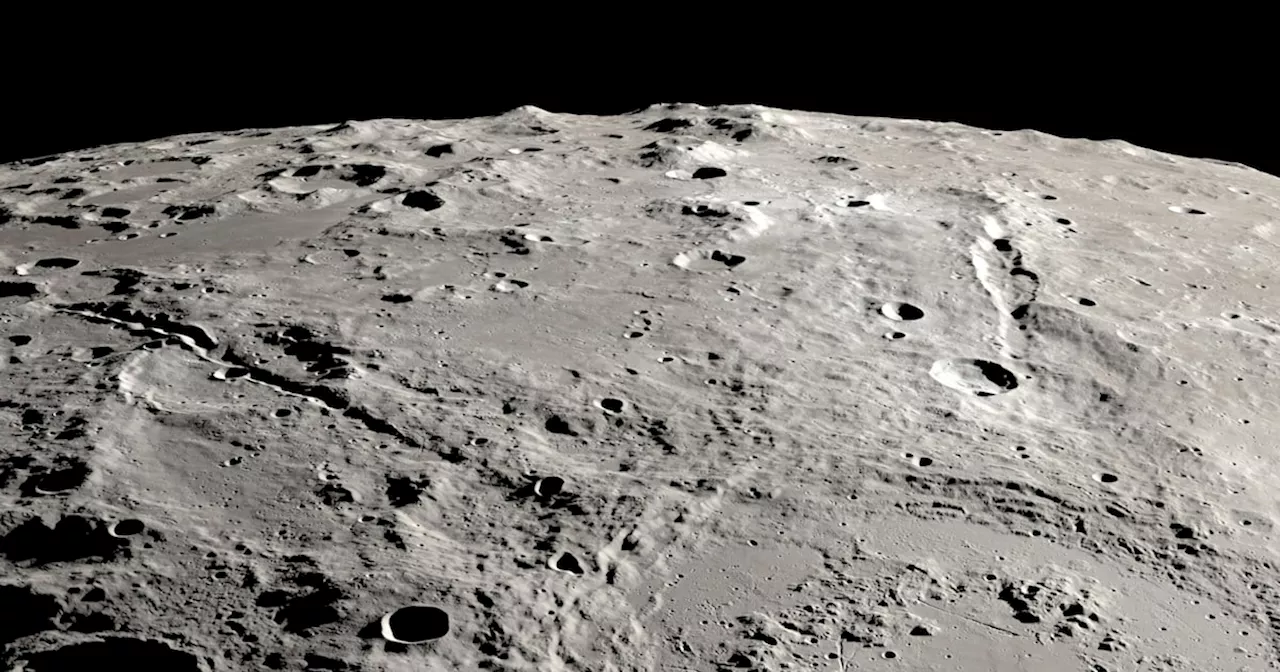New research reveals that an asteroid impact billions of years ago created enormous canyons on the moon's far side. This discovery offers valuable insights into the moon's and Earth's formation and highlights the potential for scientific discoveries in permanently shadowed areas.
A recently released image from NASA offers a glimpse into a monumental event in the moon's history. Billions of years ago, a colossal asteroid collided with the lunar far side, leaving behind a pair of vast canyons that dwarf even Arizona's Grand Canyon. This information comes from a groundbreaking study conducted by U.S. and British scientists who analyzed photos and data from NASA 's Lunar Reconnaissance Orbiter.
The study reveals that the asteroid, estimated to be 15 miles wide, struck the moon near its south pole. The impact created a massive basin and unleashed a torrent of boulders traveling at nearly a mile per second. These projectiles rained down on the lunar surface, carving out the massive canyons in a mere 10 minutes, a stark contrast to the millions of years it took the Grand Canyon to form. The energy released during this cataclysmic event is estimated to have been over 130 times the world's current nuclear weapon stockpile. Remarkably, NASA's targeted exploration zone for the Artemis program, focused on the moon's near side, appears to have been spared from the debris generated by this ancient impact. This means the region boasts pristine, older rocks dating back over 4 billion years, offering invaluable insights into both the moon's and Earth's formation. These rocks could reveal secrets about the early solar system and the processes that shaped our planets.While the study sheds light on this dramatic event, some mysteries remain. Scientists are still investigating whether the newly formed canyons are permanently shadowed, like some craters at the lunar south pole. Such permanently shadowed areas are believed to hold significant amounts of ice, a potential resource for future lunar missions. The ice could be extracted and used for rocket fuel and drinking water, supporting long-term human presence on the moon. The Artemis program, the successor to the Apollo missions, aims to return astronauts to the moon within this decade, with plans for a lunar orbital flight next year and a landing shortly thereafter. The discovery of these ancient canyons adds another layer of intrigue to the moon's history and underscores the scientific treasures awaiting discovery in the cosmos
MOON ASTEROID CANYONS SCIENTISTS NASA ARTEMIS PROGRAM
United States Latest News, United States Headlines
Similar News:You can also read news stories similar to this one that we have collected from other news sources.
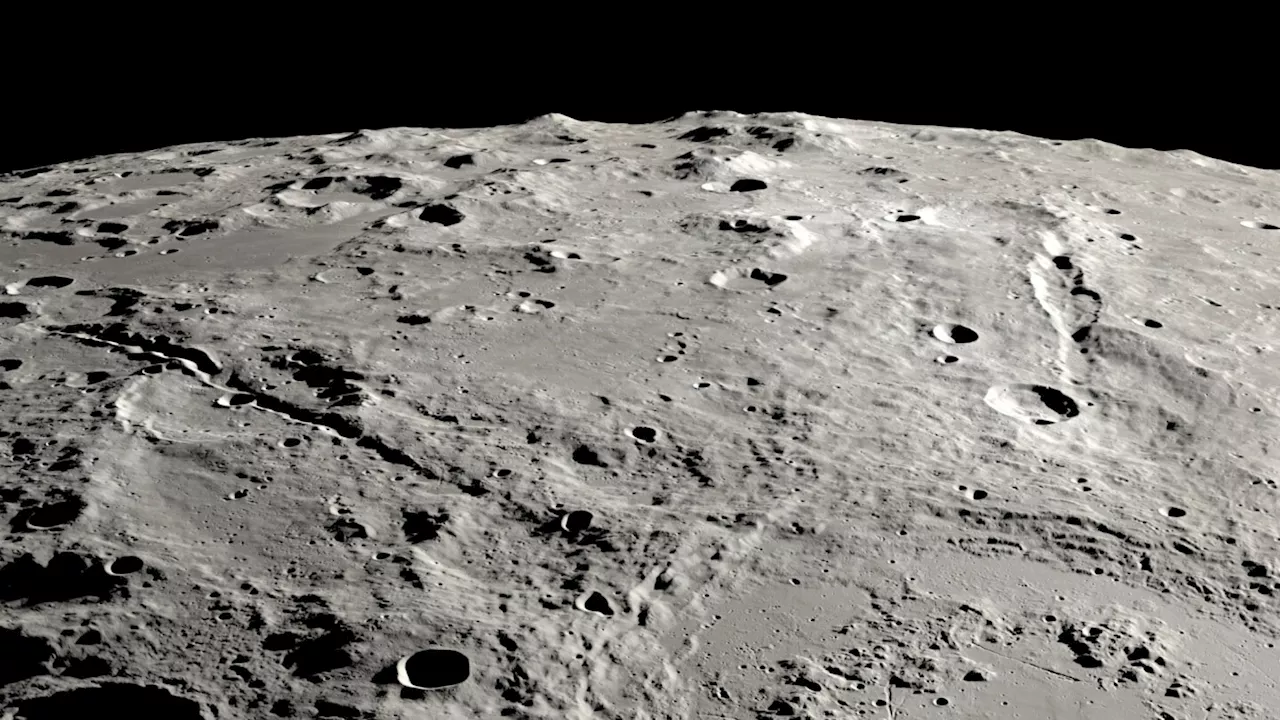 How an ancient asteroid strike carved out 2 grand canyons on the moonNew research shows that when an asteroid slammed into the moon billions of years ago, it carved out a pair of grand canyons on the far side. That's good news for NASA, which is looking to land astronauts at the south pole on the near, Earth-facing side later this decade.
How an ancient asteroid strike carved out 2 grand canyons on the moonNew research shows that when an asteroid slammed into the moon billions of years ago, it carved out a pair of grand canyons on the far side. That's good news for NASA, which is looking to land astronauts at the south pole on the near, Earth-facing side later this decade.
Read more »
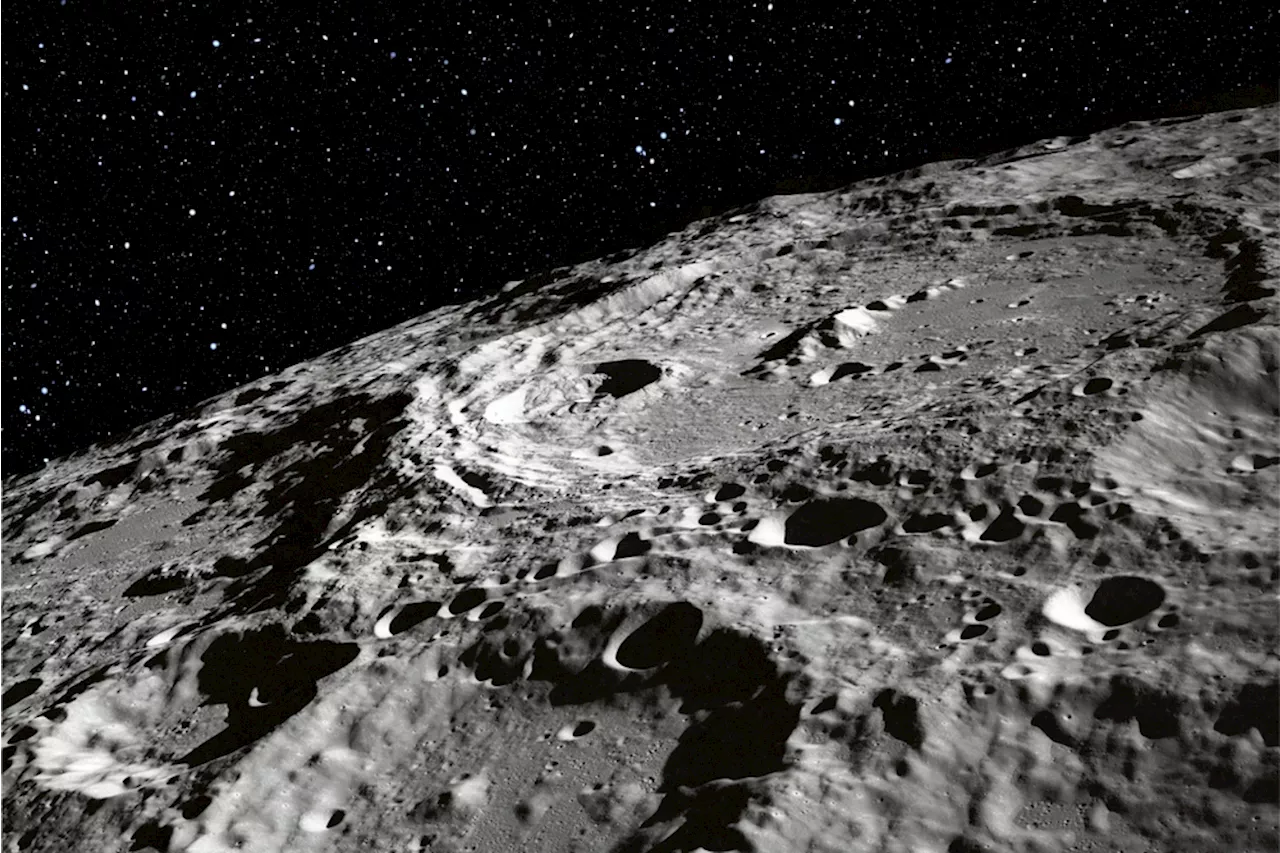 Ancient Celestial Objects Likely Carved Two Grand Canyons on the Moon's SurfaceThe discovery of two Grand Canyons on the moon and analysis of the lunar south pole area will prepare astronauts for Artemis moon visit.
Ancient Celestial Objects Likely Carved Two Grand Canyons on the Moon's SurfaceThe discovery of two Grand Canyons on the moon and analysis of the lunar south pole area will prepare astronauts for Artemis moon visit.
Read more »
 Asteroid Bennu Holds Salty Clues to Earth's Ancient Water World and Origin of LifeNASA's Osiris-Rex mission brought back samples from asteroid Bennu, revealing sodium-rich minerals, amino acids, and even parts of the genetic code. Scientists believe these ingredients, combined with water, may have played a crucial role in the emergence of life on Earth billions of years ago.
Asteroid Bennu Holds Salty Clues to Earth's Ancient Water World and Origin of LifeNASA's Osiris-Rex mission brought back samples from asteroid Bennu, revealing sodium-rich minerals, amino acids, and even parts of the genetic code. Scientists believe these ingredients, combined with water, may have played a crucial role in the emergence of life on Earth billions of years ago.
Read more »
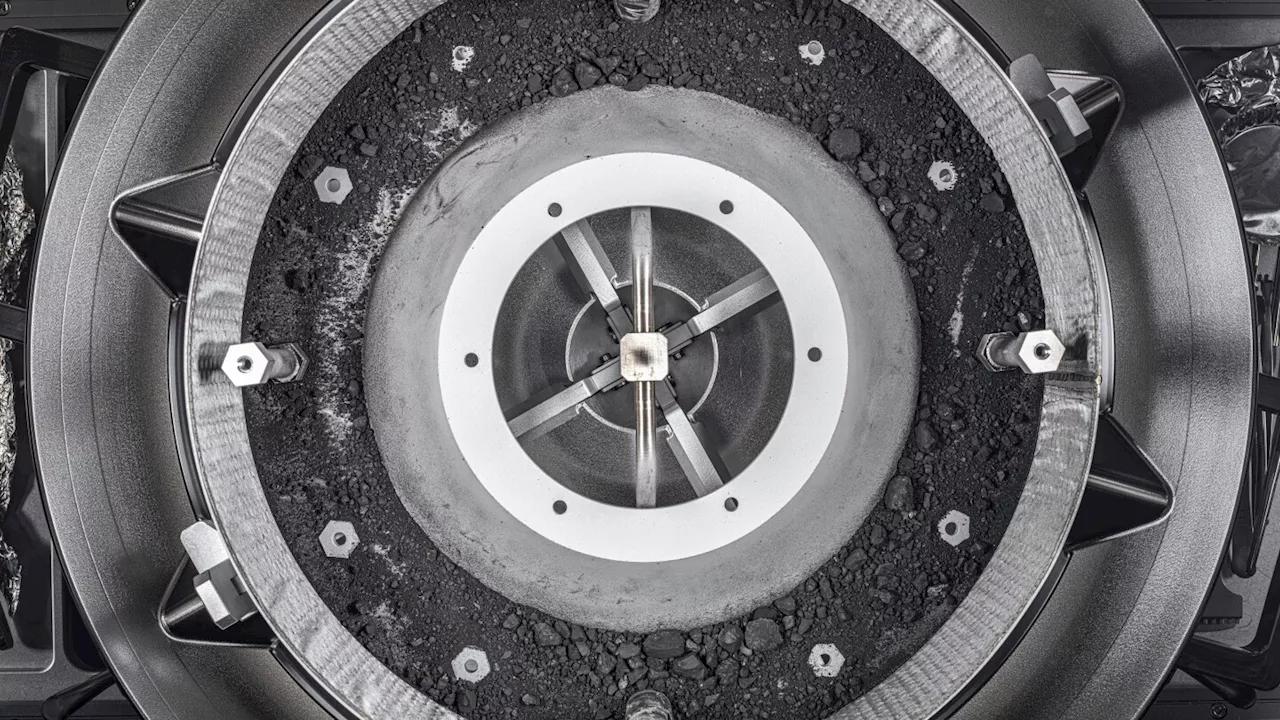 Asteroid Samples Reveal Secrets of Ancient Water World and Possible Origins of LifeNASA's OSIRIS-REx mission has delivered samples from asteroid Bennu, revealing evidence of an ancient water world and the potential building blocks for life. Scientists are analyzing the samples to understand the early solar system and the possibility of life beyond Earth.
Asteroid Samples Reveal Secrets of Ancient Water World and Possible Origins of LifeNASA's OSIRIS-REx mission has delivered samples from asteroid Bennu, revealing evidence of an ancient water world and the potential building blocks for life. Scientists are analyzing the samples to understand the early solar system and the possibility of life beyond Earth.
Read more »
 Asteroid Bennu Sample Reveals Molecules Key to Life and Evidence of Ancient SaltwaterNASA's OSIRIS-REx mission delivered samples from asteroid Bennu to Earth in 2023. Analysis of these samples revealed molecules essential for life on Earth, including amino acids and nucleobases, as well as evidence of ancient saltwater environments. These findings suggest that the conditions necessary for the emergence of life were widespread in the early solar system, increasing the odds of life forming on other planets and moons.
Asteroid Bennu Sample Reveals Molecules Key to Life and Evidence of Ancient SaltwaterNASA's OSIRIS-REx mission delivered samples from asteroid Bennu to Earth in 2023. Analysis of these samples revealed molecules essential for life on Earth, including amino acids and nucleobases, as well as evidence of ancient saltwater environments. These findings suggest that the conditions necessary for the emergence of life were widespread in the early solar system, increasing the odds of life forming on other planets and moons.
Read more »
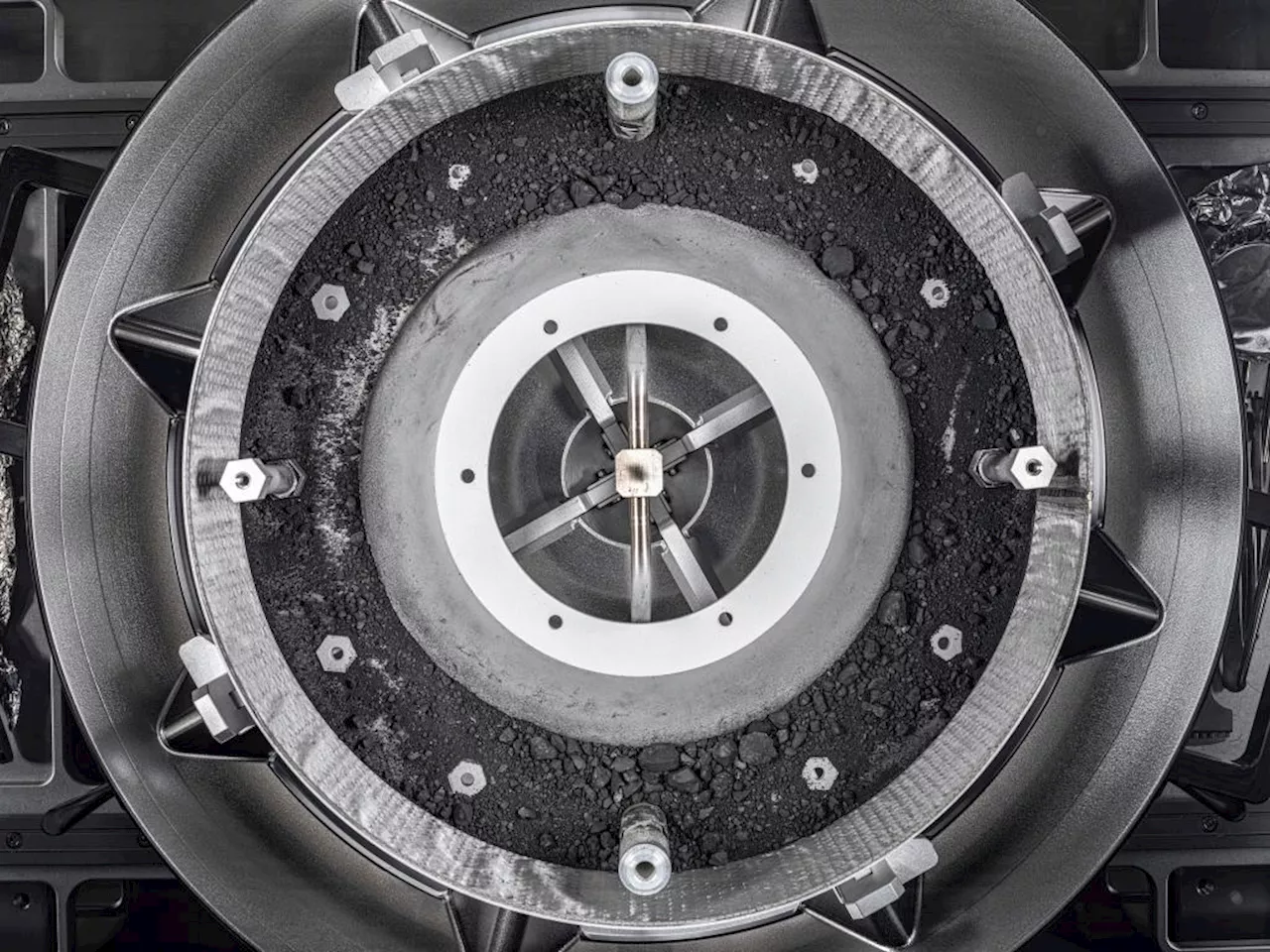 Ancient Asteroid Holds Clues to Earth's Life OriginsNASA's OSIRIS-REx mission delivered samples from asteroid Bennu, revealing sodium-rich minerals, amino acids, and even fragments of the genetic code. These findings suggest that asteroids may have played a key role in delivering the building blocks of life to Earth.
Ancient Asteroid Holds Clues to Earth's Life OriginsNASA's OSIRIS-REx mission delivered samples from asteroid Bennu, revealing sodium-rich minerals, amino acids, and even fragments of the genetic code. These findings suggest that asteroids may have played a key role in delivering the building blocks of life to Earth.
Read more »
